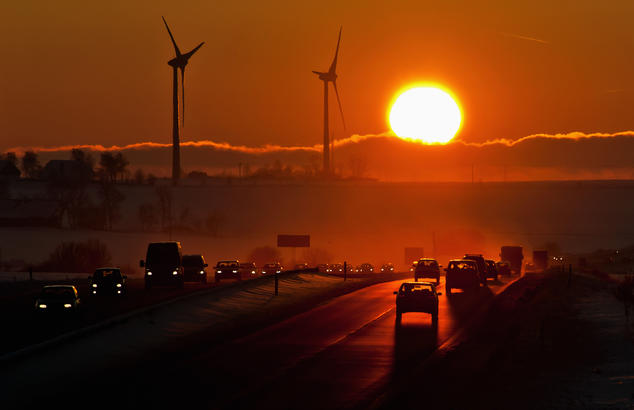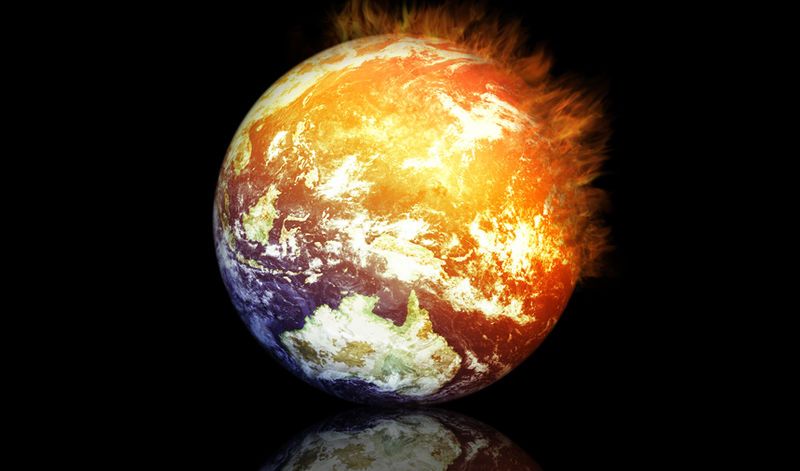Global Warming 101

Q: What is an Earth-wide temperature boost?
A: Here's a basic meaning of a dangerous atmospheric devation. (What's more, indeed, it's truly happening.) Over the previous 50 years, the normal worldwide temperature has expanded at the quickest rate in written history. What's more, specialists see the pattern is quickening: All yet one of the 16 most sultry years in NASA's 134-year record have happened since 2000.
Environmental change deniers have contended that there has been a "delay" or a "stoppage" in rising worldwide temperatures, however a few late investigations, including a 2015 paper distributed in the diary Science, have refuted this claim. Furthermore, researchers say that unless we control a worldwide temperature alteration outflows, normal U.S. temperatures could increment by up to 10 degrees Fahrenheit throughout the following century.
Q: What causes a worldwide temperature alteration?
A: Global warming happens when carbon dioxide (CO2) and other air toxins and nursery gasses gather in the climate and assimilate daylight and sun oriented radiation that have ricocheted off the world's surface. Ordinarily, this radiation would escape into space—however these toxins, which can keep going for quite a long time to hundreds of years in the environment, trap the warmth and make the planet get more blazing. That is what's known as the nursery impact.
In the United States, the consuming of petroleum derivatives to make power is the biggest wellspring of warmth catching contamination, delivering around two billion tons of CO2 consistently. Coal-consuming force plants are by a long shot the greatest polluters. The nation's second-biggest wellspring of carbon contamination is the transportation area, which creates around 1.7 billion tons of CO2 emanations a year.
Controling hazardous environmental change requires profound cuts in discharges, and additionally the utilization of contrasting options to petroleum derivatives around the world. Fortunately we've begun a turnaround: CO2 emanations in the United States really diminished from 2005 to 2014, thanks to some degree to new, vitality effective innovation and the utilization of cleaner fills. Furthermore, researchers keep on developing better approaches to modernize control plants, create cleaner power, and consume less gas while we drive. The test is to make certain these arrangements are put to utilize and generally embraced.

Q: How is a worldwide temperature alteration connected to extraordinary climate?
A: Scientists concur that the world's rising temperatures are filling longer and more blazing warmth waves, more regular dry spells, heavier precipitation, and all the more capable tropical storms. In 2015, for instance, researchers said that a continuous dry spell in California—the state's most exceedingly awful water deficiency in 1,200 years—had been escalated by 15 percent to 20 percent by a worldwide temperature alteration. They additionally said the chances of comparative dry spells occurring later on had generally multiplied over the previous century. What's more, in 2016, the National Academies of Science, Engineering, and Medicine declared that it's currently conceivable to unquestionably trait certain climate occasions, similar to some warmth waves, specifically to environmental change.
The world's sea temperatures are getting hotter, as well—which implies that hurricanes can get more vitality. So an unnatural weather change could turn, say, a classification 3 storm into a more hazardous classification 4 storm. Truth be told, researchers have discovered that the recurrence of North Atlantic sea tempests has expanded since the mid 1980s, and in addition the quantity of tempests that achieve classifications 4 and 5. In 2005, Hurricane Katrina—the costliest sea tempest in U.S. history—struck New Orleans; the second-costliest, Hurricane Sandy, hit the East Coast in 2012.
The effects of a worldwide temperature alteration are being felt over the globe. Outrageous warmth waves have caused a huge number of passings around the globe as of late. Furthermore, in a disturbing indication of occasions to come, Antarctica has been losing around 134 billion metric huge amounts of ice every year since 2002. This rate could accelerate on the off chance that we continue consuming non-renewable energy sources at our ebb and flow pace, a few specialists say, causing ocean levels to rise a few meters throughout the following 50 to 150 years.
Q: What are the other effects of global warming?
An: Each year, researchers take in more about the results of a dangerous atmospheric devation, and many concur that ecological, monetary, and wellbeing outcomes are probably going to happen if momentum patterns proceed. Here's only a sprinkling of what we can anticipate:
Softening ice sheets, early snowmelt, and serious dry spells will cause more emotional water deficiencies and increment the danger of fierce blazes in the American West.
Rising ocean levels will prompt waterfront flooding on the Eastern Seaboard, particularly in Florida, and in different regions, for example, the Gulf of Mexico.
Woodlands, ranches, and urban communities will confront troublesome new nuisances, warm waves, substantial storms, and expanded flooding. Each one of those variables will harm or obliterate horticulture and fisheries.
Interruption of natural surroundings, for example, coral reefs and Alpine glades could drive many plant and creature species to termination.
Sensitivities, asthma, and irresistible infection flare-ups will turn out to be more typical because of expanded development of dust delivering ragweed, more elevated amounts of air contamination, and the spread of conditions positive to pathogens and mosquitoes.

Q: Where does the United States stand in terms of global-warming contributors?
A: lately, China has led the pack in a worldwide temperature alteration contamination, creating around 28 percent of all CO2 outflows. The United States comes in second. In spite of making up only 4 percent of the total populace, we deliver an incredible 16 percent of all worldwide CO2 discharges—as much as the European Union and India (third and fourth place) consolidated. What's more, America is as yet number one, by a long shot, in total emanations in the course of recent years. Our obligation matters to different nations, and it should matter to us, as well.
Q: Is the United States doing anything to prevent global warming?
A: We've begun. Be that as it may, so as to evade the most exceedingly bad impacts of environmental change, we have to do significantly more—together with different nations—to decrease our reliance on petroleum products and begin utilizing clean vitality.
In 2015, the U.S. Natural Protection Agency vowed to diminish carbon contamination from our energy plants by about a third by 2030, in respect to 2005 levels, through its Clean Power Plan. The U.S. Division of Transportation has proposed carbon contamination and efficiency measures that should slice outflows through the 2020s. Chemicals that add to a dangerous atmospheric devation, similar to hydrofluorocarbons (utilized as a part of aeration and cooling systems), are being eliminated of generation across the nation, as are vitality wasteful family things like radiant lights. Additionally in 2015, sun oriented and wind control gave more than 5 percent of the United States' power out of the blue, and development began on the nation's first seaward breeze control venture.
All inclusive, at the United Nations Conference on Climate Change in Paris, 195 nations—including the United States—consented to contamination cutting arrangements with an objective of keeping the normal worldwide temperature from rising more than 1.5 degrees Celsius above preindustrial times. (Researchers say we should remain beneath a two-degree increment to maintain a strategic distance from disastrous atmosphere impacts.)
To help influence the arrangement to happen, the Obama organization vowed $3 billion to the Green Climate Fund, a global association committed to helping poor nations receive cleaner vitality innovations. Under the terms of the Paris understanding, taking an interest countries will meet at regular intervals, beginning in 2020, to overhaul their plans for cutting CO2 discharges. Starting in 2023, they will likewise need to freely report their advance.
Q: Is global warming too big of a problem for me to help tackle?
A: Wondering how to stop a dangerous atmospheric devation? Decrease your own carbon impression by following a couple of simple advances. Make saving vitality a piece of your day by day routine and your choices as a customer. When you search for new machines like coolers, washers, and dryers, search for items with the administration's Energy Star mark; they meet a higher standard for vitality productivity than the base government necessities. When you purchase an auto, search for one with the most noteworthy gas mileage and least outflows. You can likewise lessen your outflows by taking open transportation or carpooling when conceivable.
And keeping in mind that new government and state norms are a positive development, substantially more should be finished. Voice your help of atmosphere neighborly and environmental change readiness approaches, and tell your delegates that progressing from filthy petroleum products to clean power ought to be a best need—since it's essential to building solid, more secure groups.